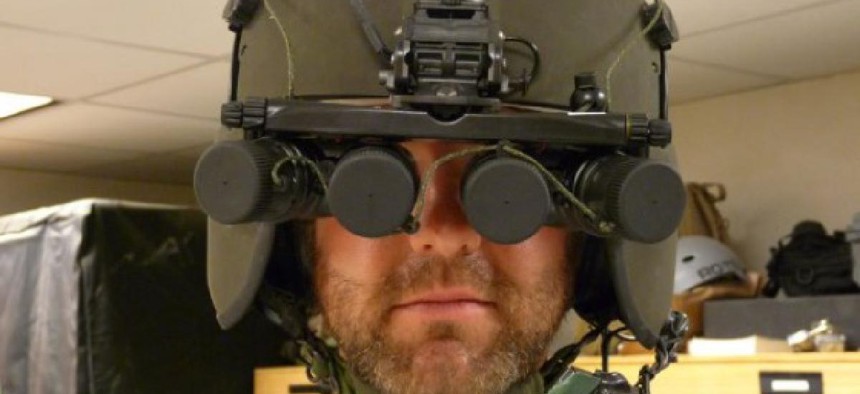Army virtual reality sensor aims to bring 360-degree view to human eyes
An Army research solicitation seeks sensor technology able to bring human eyes a 360-degree view of the battlefield.
With advances in virtual reality technology, it's now possible for soldiers to view their environments in 360 degrees, as if they had eyes in the back of their heads.
Unfortunately, the problem is that people don't have eyes in the back of their heads. As they have for millions of years, humans see with a 120-degree field of vision.
The Army wants technology that will compress a 360-degree view into a 120-degree virtual reality field. "Numerous studies in altered or inverted visual fields strongly suggests that the human visual system is limited primarily by the sensors (eyes) rather than the computational mechanism (brain)," explains the Army research solicitation. "Indeed, while theories vary, it appears that the brain is quite capable of acclimating to non-standard visual fields and that humans can perform at the same proficiency using these altered visual fields."
What the Army envisions is technology that displays real-time 360-degree imagery, with enhanced symbology and without distortion, into a 120-degree field of view using a virtual reality headset.
"Rather than a linear compression, an algorithm should be developed such that there will be no resolution or distance distortion for images in the fovea (~ +/- 5 degrees off of the center line of sight), and that the remaining peripheral view is compressed to present the remaining 350 degrees," the solicitation states. "The exact method of compression (e.g., linear, logarithmic) should be explored to determine the ‘best fit’ for human performance."
The solicitation notes that while gaming, 3D modeling and animation software often allow a larger field of view, that's not good enough. "These packages do not allow for variations in the compression pattern (e.g., keeping the resolution and distance of objects in the foveal view at those of normal field of view)."
Phase I of the project is a functional proof-of-concept system, where the user is able to move around within a virtual 3D environment and react to artificial objects in that space. In addition, techniques for acclimating to a 360-degree view, and then returning to normal vision, should be demonstrated on a real person.
Phase II involves choosing the best concept and how to use it. Evaluation criteria include time to detect threats, accuracy in classifying threats, negative physiological effects such as disorientation or headaches, ability to move, navigate and avoid obstacles, and switching from 360-degree to normal vision.
NEXT STORY: Army seeks swarms of mini-drones for medevac




